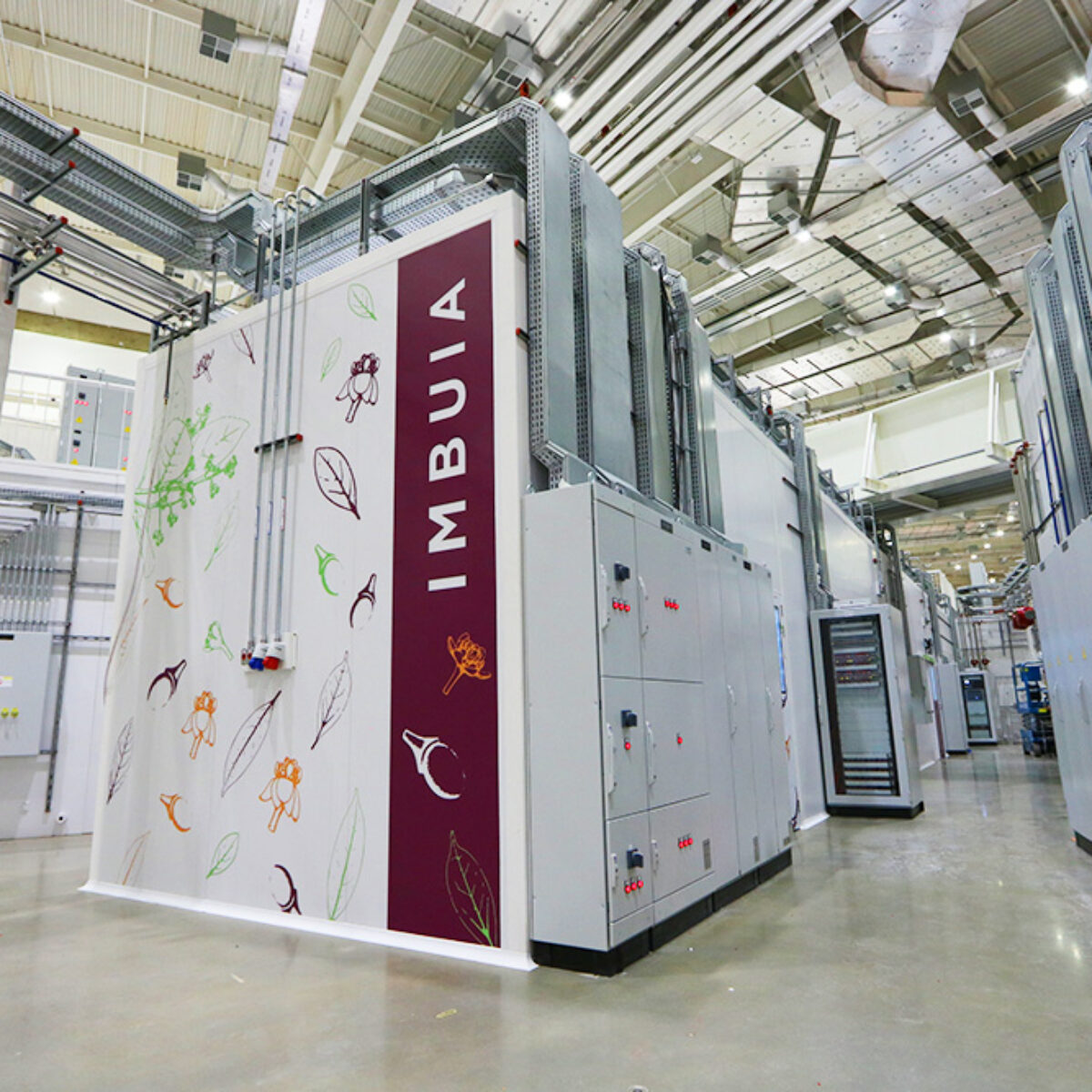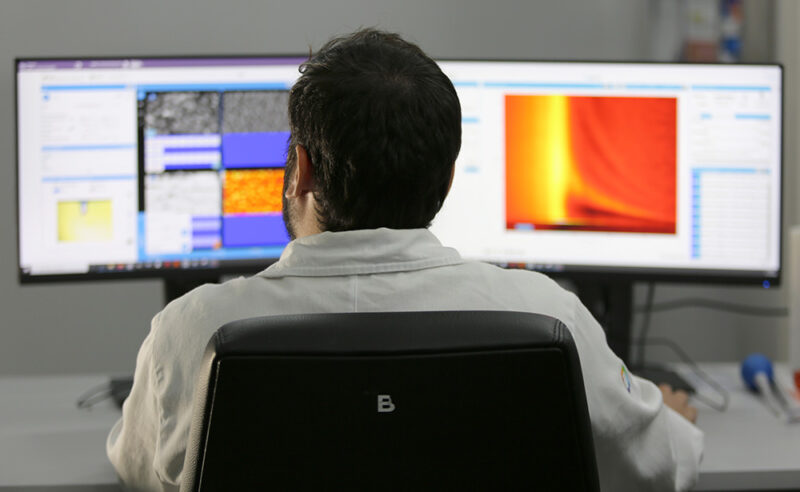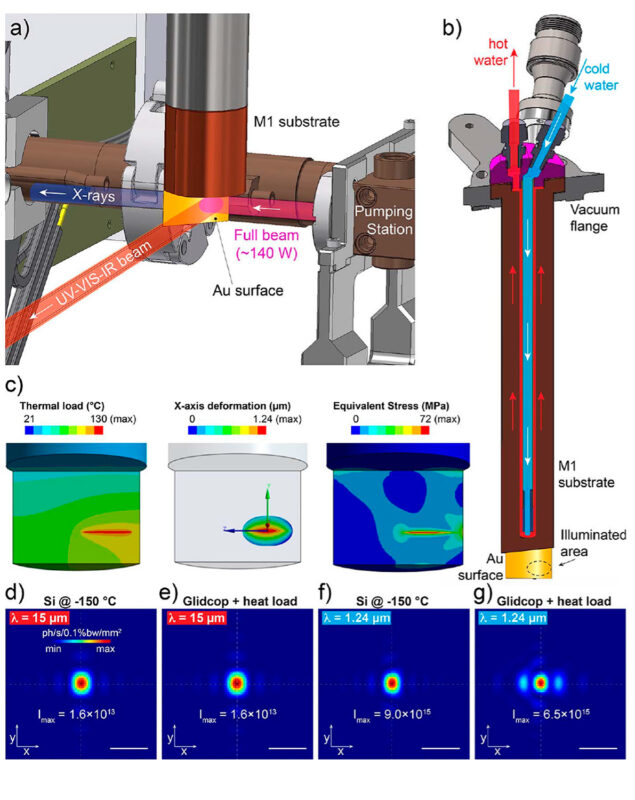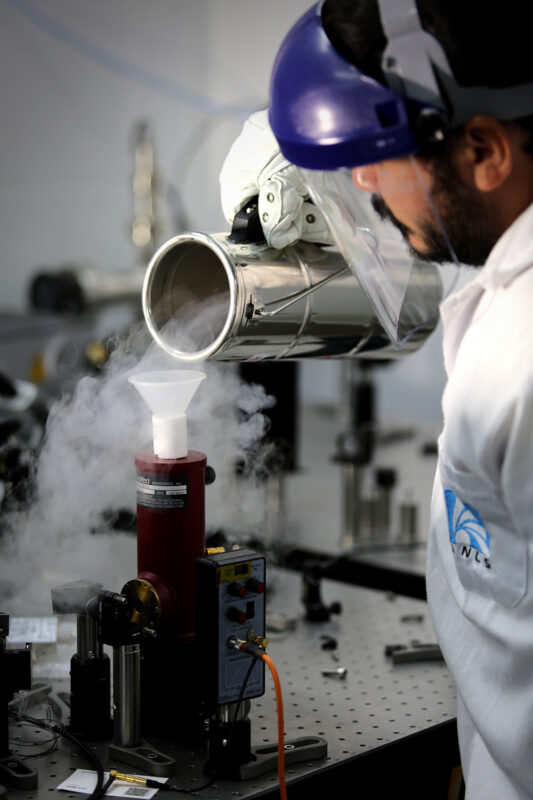
Experimental station of the Imbuia beamline at Sirius
Work about the Imbuia beamline was featured on scientific journal’s cover and impacts a broad community of researchers in Brazil
An article published by CNPEM researchers was featured on Journal of Synchrotron Radiation (JSR)’s cover and details the design and operation of Sirius’ Imbuia beamline, dedicated to infrared (IR) micro and nanospectroscopy. This pioneering work opens the doors for other research institutions around the world to build new infrared beamlines at fourth-generation synchrotron light sources.
Infrared (IR) spectroscopy is capable of accessing the molecular composition of various types of materials, from our bodies cells to microchips present in electronics. To do this, these materials are introduced into a spectrometer in which the sample is exposed to infrared radiation and, thus, the absorption of this radiation is measured at different light wavelengths or frequencies.
As molecules have specific vibrational movements that correspond to different energies in the infrared spectrum, the absorption at certain frequencies makes it possible to identify which functional molecular groups are present in the sample, whether in complex mixtures or pure composites. In this arrangement, the sample’s chemical composition is revealed in the reading of this absorption spectrum.
Because it is a natural vibrational response from matter, there is no need in using chemical markers or fluorescent marking for biological materials analysis, which allows a non-invasive analysis, preserving the sample’s integrity and avoiding the artifacts introduction that could interfere with the results. Furthermore, this advantage simplifies the experimental process, reduces costs and enables real-time analysis of complex samples, such as tissues and cells.
The infrared spectroscopy has a wide range of applications in the polymers analysis, allowing the precise characterization of its chemical composition and molecular structure. This is crucial for environmental studies related to microplastics, for instance, making it possible to identify and quantify small plastic particles in environmental samples and contributing to a more complete understanding of the pollution and impacts caused by these materials. In addition, the technique can also be used in fields such as biochemistry, pharmacology, biomaterials, energy materials and 2D materials.

Researcher performing measurements on the Imbuia beamline
Fourth-generation synchrotron light sources such as Sirius represent a major advance for several research areas. Its dense magnetic lattices generate high coherence and brightness X-ray beams, enabling faster experiments with greater spatial and temporal resolution.
However, the dense magnetic lattices of these machines create challenges for extracting longer, less energetic wavelengths, such as ultraviolet and infrared, which are fundamental to many scientific areas.
In March 2022, the Imbuia beamline received its first synchrotron light beam after being connected to the Sirius electron accelerators, becoming the first world’s research infrastructure to benefit from infrared radiation generated by a fourth-generation synchrotron accelerator.
“The infrared (IR) radiation extraction in 4th generation synchrotrons brings specific and quite complex challenges. The magnets configuration in these rings were optimized mainly for high-energy X-rays, which makes the efficient capture of infrared radiation more difficult,” says Raul Freitas, the Imbuia beamline coordinator at Sirius.
The magnets in a MBA (Multi-Bend Achromat) lattice are positioned very close to each other in order to reduce emittance and increase source brightness, which limits the available space for infrared radiation extraction, which requires additional optical components to guide the IR light from the ring to the beamline.
In 4th generation synchrotron light sources, such as Sirius, the magnets configuration is designed to provide high-energy X-rays, which means that the critical energy is usually high. However, the IR radiation is at the opposite end of the spectrum, with much longer wavelengths and, therefore, associated with much lower energies.
To solve this challenge, the Imbuia beamline has as its source a low-field dipole in the Sirius storage ring, which generates a magnetic field with a intensity peak of 0.56 T, which significantly reduces the critical energy and allows a more efficient extraction of longer wavelengths of light.
“Imbuia’s first optical element is a vertically mounted, gold-coated flat mirror, located in front of the synchrotron radiation extraction window. It reflects the low-energy portion of the radiation while absorbing the high-energy part of it”, comments Raul.

Images (a) and (b) show assembly diagrams of the M1 mirror and its water cooling system. Images (c), (d), (e), (f) and (g) show thermal load and deformation simulations. (Source)
At this point in the ring, synchrotron radiation generates a thermal load of about 140 W, therefore, this mirror needs to be cooled in order to avoid thermal deformations that could compromise optical quality. A cooling system circulates water at about 21°C, which keeps the mirror surface under controlled temperatures.
Other optical elements are part of the Imbuia beamline, such as optical windows, flat mirrors, parabolic mirrors and an elliptical mirror. All of this, together with the characteristics of the synchrotron radiation generated by Sirius, guarantees the beam’s high stability and low distortion, ensuring an excellent signal-to-noise correlation in infrared spectroscopy experiments at the line’s two experimental stations.

Researcher refilling equipment with liquid nitrogen on the Imbuia beamline
“The former UVX IR beamline, the former CNPEM synchrotron light source operated by LNLS, used to serve a wide range of Brazilian researchers, who explored a diversity of samples, including 2D materials such as graphene, energetic materials such as perovskites and new batteries, as well as the biology of isolated cells, such as neurons and the drugs delivery in cell membranes. With the new Imbuia beamline, innovative opportunities arise for these techniques’ usage, combining the high stability beam from a 4th generation synchrotron light source with advanced analysis equipment,” highlights Harry Westfahl Jr., director of the National Synchrotron Light Laboratory.
Find out more about the Imbuia beamline
The Brazilian Center for Research in Energy and Materials (CNPEM) is home to a state-of-the-art, multi-user and multidisciplinary scientific environment and works on different fronts within the Brazilian National System for Science, Technology and Innovation. A social organization overseen by the Ministry of Science, Technology and Innovation (MCTI), CNPEM is driven by research that impacts the areas of health, energy, renewable materials, and sustainability. It is responsible for Sirius, the largest assembly of scientific equipment constructed in the country, and is currently constructing Project Orion, a laboratory complex for advanced pathogen research. Highly specialized science and engineering teams, sophisticated infrastructure open to the scientific community, strategic lines of investigation, innovative projects involving the productive sector, and training for researchers and students are the pillars of this institution that is unique in Brazil and able to serve as a bridge between knowledge and innovation. It is responsible for operating the Brazilian Synchrotron Light (LNLS), Biosciences (LNBio), Nanotechnology (LNNano), and Biorenewables (LNBR) National Laboratories, as well as the Ilum School of Science, which offers a bachelor’s degree program in science and technology with support from the Ministry of Education (MEC).
Brazilian researchers use Sirius facilities to investigate biophysical processes related to prions
Article published in Communications Materials presents significant findings and discusses the possibilities offered by this technique combined with synchrotron light sources